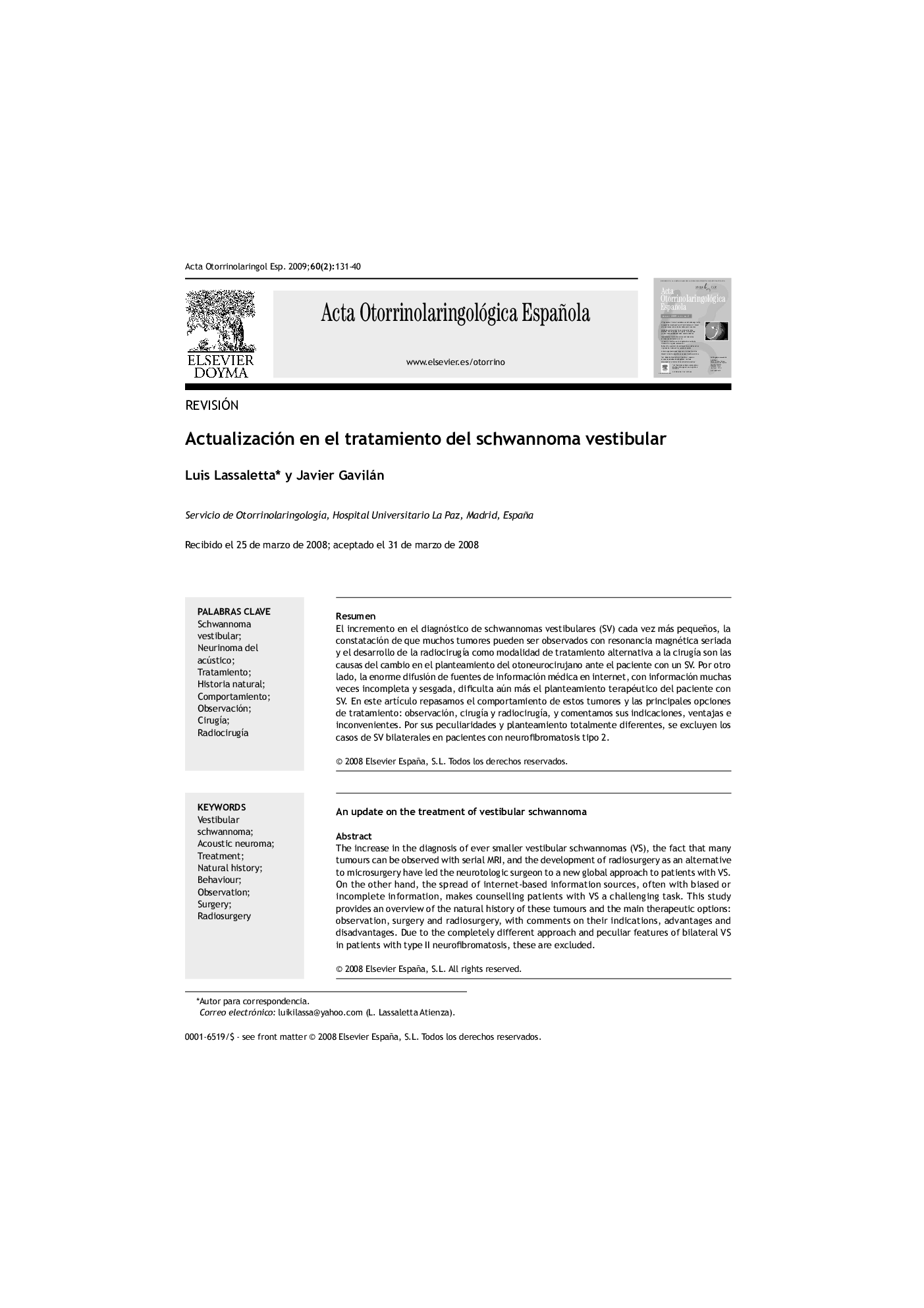| Article ID | Journal | Published Year | Pages | File Type |
|---|---|---|---|---|
| 4102441 | Acta Otorrinolaringológica Española | 2009 | 10 Pages |
ResumenEl incremento en el diagnóstico de schwannomas vestibulares (SV) cada vez más pequeños, la constatación de que muchos tumores pueden ser observados con resonancia magnética seriada y el desarrollo de la radiocirugía como modalidad de tratamiento alternativa a la cirugía son las causas del cambio en el planteamiento del otoneurocirujano ante el paciente con un SV. Por otro lado, la enorme difusión de fuentes de información médica en internet, con información muchas veces incompleta y sesgada, dificulta aún más el planteamiento terapéutico del paciente con SV. En este artículo repasamos el comportamiento de estos tumores y las principales opciones de tratamiento: observación, cirugía y radiocirugía, y comentamos sus indicaciones, ventajas e inconvenientes. Por sus peculiaridades y planteamiento totalmente diferentes, se excluyen los casos de SV bilaterales en pacientes con neurofibromatosis tipo 2.
The increase in the diagnosis of ever smaller vestibular schwannomas (VS), the fact that many tumours can be observed with serial MRI, and the development of radiosurgery as an alternative to microsurgery have led the neurotologic surgeon to a new global approach to patients with VS. On the other hand, the spread of internet-based information sources, often with biased or incomplete information, makes counselling patients with VS a challenging task. This study provides an overview of the natural history of these tumours and the main therapeutic options: observation, surgery and radiosurgery, with comments on their indications, advantages and disadvantages. Due to the completely different approach and peculiar features of bilateral VS in patients with type II neurofibromatosis, these are excluded.
